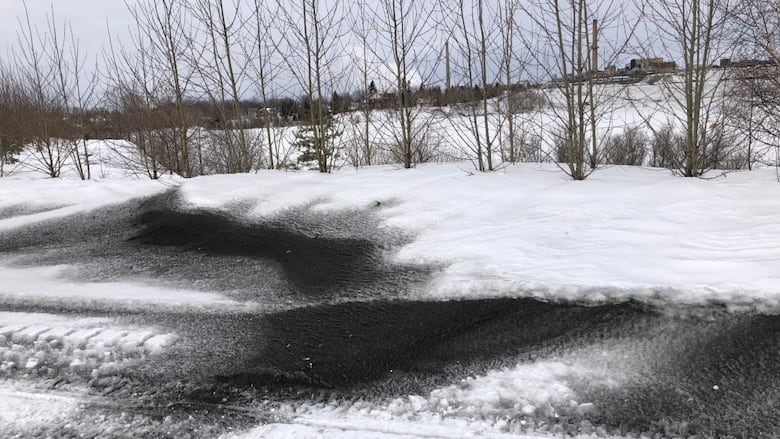Quebec smelter faces fine after schoolyard covered in arsenic dust
Environment Ministry carried out investigation at Glencore's Horne smelter in Rouyn-Noranda

An incident that left a coating of black dust across a large area of Rouyn-Noranda, Que., has prompted a charge against Glencore's Horne smelter.
The company is facing a charge under Quebec's environmental laws, article 20 and 21, for allegedly releasing copper concentrate dust at the facility. It could face a minimum fine of $30,000.
Quebec's Environment Ministry said in a statement the charge stems from an investigation it carried out after officials were called to the copper smelter northwest of Montreal on March 7, 2023.
At the time, several Rouyn-Noranda residents shared photos of what they described as "black snow" on social media and in the days that followed.
While the company said the concentrates stored outdoors did not contain arsenic, analysis carried out on the snow near schools and daycare centres in the Notre-Dame neighbourhood near the Horne smelter revealed that the contaminated snow contained high concentrations of arsenic, cadmium, nickel and lead.
This was particularly the case in the yard of the Notre-Dame-de-Protection elementary school.

One of the samples contained up to 137 times more arsenic than the Quebec standard.
Children in the neighbourhood were exposed to this dust for several days as it took until March 11 — four days after the contaminants leaked — for a public health advisory to be issued. It took another 10 days for the Environment Ministry to require the decontamination of the land, including the schoolyard.
The Environment Ministry says the presence of this contaminant is likely to be harmful to humans as well as cause damage or affect the quality of the nearby environment, ecosystems and living species.
The company was ordered to improve its practices to prevent further concentrate leaks. Since then, the Horne smelter has added a dome to store its concentrate and was required to make various adjustments to reduce transport on site.
Glencore Canada was not immediately available for comment.
With files from The Canadian Press and Radio-Canada's Lise Millette